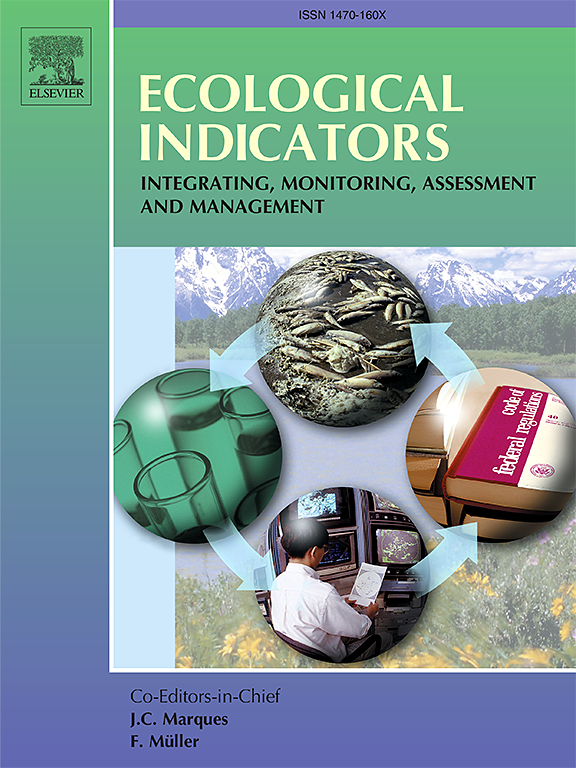Assessing green space exposure in high density urban areas: A deficiency-sufficiency framework for Shanghai
IF 7
2区 环境科学与生态学
Q1 ENVIRONMENTAL SCIENCES
引用次数: 0
Abstract
Urban green spaces enhance residents’ physical and mental health, but rapid urbanization has constrained green space exposure (GSE). While studies highlight the need for multidimensional GSE quantification, many lack methods to assess sufficiency or account for spatial heterogeneity in influencing factors. This study evaluates block-level GSE in central Shanghai using a deficiency-sufficiency framework and multiscale geographically weighted regression (MGWR) to analyze green space availability, accessibility, and visibility. Key findings include: (1) Green Coverage Ratio (GCR) is higher in the west and lower in the east, with low values concentrated in the central area, Park Accessibility Index (PAI) has high-value clusters in the southwest and north, and Green View Index (GVI) shows low-value clusters primarily within and near the Middle Ring Road, high-value clusters dominate peripheral areas. (2) Few blocks meet sufficiency standards across all dimensions, with GCR identified as the most deficient dimension, accounting for nearly half of all blocks. (3) MGWR analysis reveals positive correlations of both GCR and GVI with housing price, negative correlations with building density, and mixed effects of road density on PAI. Recommendations emphasize the critical role of GSE in urban planning, advocating for the promotion of pocket parks, vertical greening, and green roofs, and integrating green space planning with transit-oriented development to optimize distribution. This study offers insights for improving GSE in dense urban areas.
高密度城市绿地暴露评估:上海的不足-充足框架
城市绿地促进了居民的身心健康,但快速城市化限制了绿地暴露。虽然研究强调需要多维GSE量化,但许多研究缺乏评估影响因素的充分性或考虑其空间异质性的方法。本研究利用不足充分性框架和多尺度地理加权回归(MGWR)分析了上海市中心城区绿地可利用性、可达性和可见性。研究发现:(1)绿地覆盖度(GCR)总体上呈现西高东低的格局,低值集中在中心区域;公园可达性指数(PAI)在西南和北部呈高值集聚区;绿地景观指数(GVI)以中环线内及周边为主,高值集聚区为主。(2)满足所有维度充分性标准的街区很少,GCR被认为是最缺乏的维度,占所有街区的近一半。(3) MGWR分析表明,GCR和GVI与房价呈正相关,与建筑密度呈负相关,道路密度对PAI有混合影响。建议强调GSE在城市规划中的关键作用,倡导推广口袋公园、垂直绿化和屋顶绿化,并将绿色空间规划与交通导向发展相结合,优化布局。本研究为提高城市人口密集地区的GSE提供了参考。
本文章由计算机程序翻译,如有差异,请以英文原文为准。
求助全文
约1分钟内获得全文
求助全文
来源期刊

Ecological Indicators
环境科学-环境科学
CiteScore
11.80
自引率
8.70%
发文量
1163
审稿时长
78 days
期刊介绍:
The ultimate aim of Ecological Indicators is to integrate the monitoring and assessment of ecological and environmental indicators with management practices. The journal provides a forum for the discussion of the applied scientific development and review of traditional indicator approaches as well as for theoretical, modelling and quantitative applications such as index development. Research into the following areas will be published.
• All aspects of ecological and environmental indicators and indices.
• New indicators, and new approaches and methods for indicator development, testing and use.
• Development and modelling of indices, e.g. application of indicator suites across multiple scales and resources.
• Analysis and research of resource, system- and scale-specific indicators.
• Methods for integration of social and other valuation metrics for the production of scientifically rigorous and politically-relevant assessments using indicator-based monitoring and assessment programs.
• How research indicators can be transformed into direct application for management purposes.
• Broader assessment objectives and methods, e.g. biodiversity, biological integrity, and sustainability, through the use of indicators.
• Resource-specific indicators such as landscape, agroecosystems, forests, wetlands, etc.
 求助内容:
求助内容: 应助结果提醒方式:
应助结果提醒方式:


